- Shannon Jolly
- Morehouse College
- Morehouse College's Innovative Science, Technology Engineering, & Mathematics Explore Project (iSTEM-Xe)
- https://morehouse.edu/academics/centers-and-institutes/istem-xe/
- Morehouse College, University of Georgia
- Tiffany Bussey
- http://www.trbussey.com
- Executive Director
- Morehouse College's Innovative Science, Technology Engineering, & Mathematics Explore Project (iSTEM-Xe)
- https://morehouse.edu/academics/centers-and-institutes/istem-xe/
- Morehouse College
- Melissa Demetrikopoulos
- https://www.ncbi.nlm.nih.gov/sites/myncbi/1Piu8IFNGNSk5/bibliography/40979939/public/?sort=date&direction=descending
- Chair; External Evaluator for Noyce and ITEST projects
- Morehouse College's Innovative Science, Technology Engineering, & Mathematics Explore Project (iSTEM-Xe)
- https://morehouse.edu/academics/centers-and-institutes/istem-xe/
- Institution for Biomedical Philosphy
- Ruquanda Epps-Primas
- iSTEM
- Morehouse College's Innovative Science, Technology Engineering, & Mathematics Explore Project (iSTEM-Xe)
- https://morehouse.edu/academics/centers-and-institutes/istem-xe/
- Morehouse College
- Dwayne Joseph
- ISTEM
- Morehouse College's Innovative Science, Technology Engineering, & Mathematics Explore Project (iSTEM-Xe)
- https://morehouse.edu/academics/centers-and-institutes/istem-xe/
- Morehouse College
- HAJJ WOMACK
- https://www.linkedin.com/in/hajj-womack-481a7a40/
- iSTEM
- Morehouse College's Innovative Science, Technology Engineering, & Mathematics Explore Project (iSTEM-Xe)
- https://morehouse.edu/academics/centers-and-institutes/istem-xe/
- Morehouse College
Public Discussion
Continue the discussion of this presentation on the Multiplex. Go to Multiplex






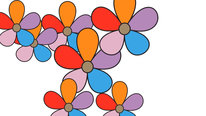

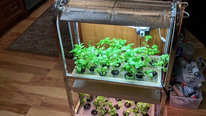
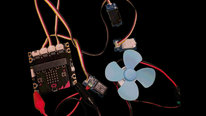
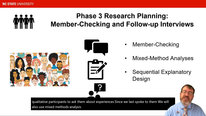
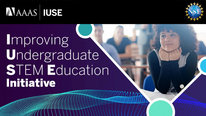
Melissa Demetrikopoulos
Chair; External Evaluator for Noyce and ITEST projects
Welcome to our video which captures an experience at a virtual museum that was built by the students in the program.
Sarah Haavind
Rosio Bugarin Pedroso
Kirstin Milks
Science Teacher
Hi iSTEM-Xe team! I'm a high school science teacher who's been trying hard to show my colleagues that you can help students develop a critical lens in science class, and I love all the ways this project does just that! I also love that your facilitator thanked the parents of participating students -- I am curious about whether or not you collected or plan to collect data/comments from families about how this experience has impacted their students.
I'm also curious about routines you've developed to help student in the math segment learn how to "clean data" as they are looking at the data on Covid-19 -- what does that look like in the current curriculum? What discourse comes up for middle schoolers in the tension between making data more accessible and changing data so much it no longer represents the original data set?
Rosio Bugarin Pedroso
Melissa Demetrikopoulos
Chair; External Evaluator for Noyce and ITEST projects
Hi Kirstin,
Thanks for your interest in the program. I will answer the first part of you post and someone else on the team will address the second part.
As the external evaluator, I conduct focus groups with the parents 2 to 3 times per year to obtain their perspective on the process of the project as well as the impact on their children (ie impact on decision to attend college, to be a STEM major, etc). We have also had them participate in surveys when we had to transition to a virtual environment to gain information about their technology needs and commitment to participate in a modified way. The project leadership also engages the parents by offering workshops for the parents such as one on ways to obtain college credit while in high school.
Sarah Haavind
Kirstin Milks
Rosio Bugarin Pedroso
Art Williams
Hi Kirstin,
In our simplistic case, we cleaned data simply by converting the data values from decimal to percent. The true learning value, I think, was having students understand the “process” of taking raw data, interpreting it, cleaning it( for greater usability)-and then developing charts for visualization. We used Excel in this instance but we have also used Juypter( https://jupyter.org/) in the past for basic data manipulation and charting. I have attached the link below to that particular slide, from our presentation: https://docs.google.com/presentation/d/1t2K2brc...
Kirstin Milks
Kirstin Milks
Science Teacher
That is so helpful -- it was nice to hear you explain it on the slide! Thanks :)
Michael Edwards
Really nice presentation. Cross-sectional engagement on relevant issues always opens the door for continued student engagement.
Rosio Bugarin Pedroso
Melissa Demetrikopoulos
Chair; External Evaluator for Noyce and ITEST projects
Thanks Michael. It is always important for the topics to be relevant to the participants, and especially critical in a virtual environment where engagement is much more challenging.
Crystal James
Great presentation and integration of STEM concepts with the social justice landscape.
Melissa Demetrikopoulos
Chair; External Evaluator for Noyce and ITEST projects
Thanks Crystal. Morehouse College is an HBCU and a Men's College in Atlanta GA with a long history of leadership in Civil Rights issues and with the professional development of Black Male STEM leaders.
Rosio Bugarin Pedroso
Principal
Hi Melissa, Amazing that parents were included in the evaluation. They are often left out. What did they say, how did the program impact their lives or their children's.
Thanks!
Kirstin Milks
Melissa Demetrikopoulos
Chair; External Evaluator for Noyce and ITEST projects
Hi Rosio,
There were a few program components that engaged the parents: Process evaluation, outcome evaluation, and parental professional development. For the process evaluation we wanted to find out how they heard about the program, and what would be better ways of getting the word out for future programs. In addition, we obtained feedback from their perspective as to the success of the program process including such things as communication, time commitment, location, approaches for engagement virtually etc. Since this is a three year commitment, this evaluation feedback from the parents was used to better meet the needs of their students and encourage retention by taking into consideration parental concerns. While the 3 year commitment was chosen due to the learning literature that suggests a long-term engagement is critical in these types of interventions, the parents reported positively on this long-term approach since it saved them from continually looking for a new program to enroll their children in and provided their children with a socially stable intellectual environment in which to grow. Parents also reported positively on the program being run on the Morehouse College campus. The students were given Morehouse College ID badges, eat their meals in the campus dinning hall, participated in the college classrooms, computer labs and maker space, and interacted with college students from Morehouse and Spelman who served as near-peer mentors in the program. This gave the students an extensive exposure to a college environment at an early age which the parents reported as being important for their children to feel that they were part of the Morehouse College community. Most of the students had an interest in attending college prior to being in the program, but the parents reported that their students gained a more detailed idea about what that meant and about choices involved in selecting a college and a specific STEM major. Parents were also invited to participate in a number of workshops aimed at their growth in STEM educational opportunities and in various technologies utilized by the program. Parents were also invited to participate in various fieldtrips and career fairs so that they could engage in some program activities along with their children.
Sarah Haavind
Senior Research Project Manager
Congratulations iSTEM-Xe team on a terrific project and a brilliant video! :-D I especially especially loved how you ended it with your clip from a Zoom session before the holidays saying goodbye - what an awesome touch of creative brilliance using that just there!...but I digress from our real purpose which is to understand and appreciate the work you are doing in iSTEM-Xe.
I was inspired that this is a three year program for middle school youth - what a beautiful investment into their lives...and it makes me wonder if you have noticed that cohorts stick together in any ways following the extended experience in your program? ...and I have so many other questions....I'll narrow to wondering if you could share with us some of your most inspiring outcomes to date.
Thank you for sharing your work with the Videohall!
With so much admiration and grateful that this video and I crossed paths,
~Sarah
Melissa Demetrikopoulos
Chair; External Evaluator for Noyce and ITEST projects
Thanks for the interest and questions. As you likely know, one of the big challenges with NSF funded projects is that there is not any funding available for follow-up and tracking of students. The students are in the program together for 3 years and then the project is over. The PI's and program faculty encourage the participants to enter additional local programs when they complete this one and some follow up communication has occurred. We plan to submit a proposal to do follow up on these students to look at long term outcomes. We do know that a number of the participants from a similar prior project have begun to matriculate into Morehouse College. You may be interested to know that some participants from a prior DRK-12 project (one that recruited students as Jrs in high school to become STEM teachers) are now serving as instructors on a recently funded ITEST project that will begin student programing this summer. So, we have some evidence that this long-term commitment to the students is resulting in excellent long-term gains and hope that we will be able to obtain funding to study this issues systematically.
In addition to 100% of participants having successful academic advancements, results from a prior ITEST project demonstrated high levels of self-efficacy in Science, Math, Technology, Problem Solving, and Innovation as well as dramatic increases (ranging from 100% to 253% increases) in students’ agreement that thinking of themselves as a STEM professional is compatible with other aspects of their background when they have had limited or no prior exposure to STEM professionals that share their race and/or ethnicity.
The working team for the projects is composed of Morehouse faculty from STEM departments, the Center for Teacher Preparation and Leadership Center, along with Atlanta area School District STEM faculty and an Academic Advisor Specialist. Faculty collaborating on these projects have worked towards solutions that facilitate student success as they progress from the K-12 environment to the College environment. In particular they were able to integrate the Atlanta area School District faculty understanding of their students’ current competencies with the Morehouse faculty understanding of the students’ competencies that are critical for student success as a STEM major and ultimately for success as a STEM teacher or STEM professional. This working group developed a program to bridge any differences between expected competencies for student success, which is being widely disseminated with successful approaches to recruiting African American males into STEM careers including pre-college STEM teaching.
James Callahan
Thank you so much for this video!
A major attraction to us in participating in the STEM Video Showcase this year was the ability to learn from and connect with fellow STEM educators, particularly how we are collectively adjusting to pandemic conditions; developing remote and virtual adaptations. Within that, programs that historically have been based in African American communities; that value educators from the communities.
You are just what we were looking for. With beautiful work like yours, the STEM Video Showcase absolutely does not disappoint!
Melissa Demetrikopoulos
Chair; External Evaluator for Noyce and ITEST projects
Hi James,
Thanks for your interest in our program.
Kirstin Milks
Science Teacher
Hi again iSTEM-Xe -- headed back here to let you know I shared your video with colleagues this week as an example of the powerful ways that teachers can educate for STEM through a culturally responsive and sustaining lens. Thank you so much for this lovely description of this important project!
Melissa Demetrikopoulos
Chair; External Evaluator for Noyce and ITEST projects
Thanks Kirstin!
Jeremy Roschelle
Thanks for bringing such an exciting program to students! I enjoyed learning about it.
Melissa Demetrikopoulos
Chair; External Evaluator for Noyce and ITEST projects
Hi Jeremy,
Thanks for your interest in the iSTEM-Xe program.
HAJJ WOMACK
iSTEM
Explicitly teaching critical thinking and problem solving processes increased the depth of student thinking. Each session builds on this process which helps with the continuity and retention. Furthermore, we do not allow for critical thinking and problem solving to remain in the abstract. They have to apply these skills using The Design Process. In so doing, the abstract becomes concrete; thereby, providing an extrinsic reward.
Josephine Louie
I love how your video centers around a virtual museum that your students created. What a great project! What kind of data would students use in their activities? How big were the data sets, and how did you make them manageable for middle-schoolers? You mention that the projects they worked on include supporting them in developing solutions and innovations to the issues and challenges they examined. Can you provide examples of some of the solutions they came up with, and what students did to pursue the solutions? Really inspiring work!
Melissa Demetrikopoulos
Chair; External Evaluator for Noyce and ITEST projects
Students learned to visualize spatial patterns using Google MyMaps. They then used this to compare Covid case numbers and employment data, in search of patterns and relationships that may warrant further investigation. They explored the implication of the number of COVID-19 cases on changes in unemployment in healthcare, transportation and retail industries.
The process they used was Define the Problem and Solutions: Collect Information: Brainstorm Ideas.
Some of the challenges that they chose to work with are
Challenge A: STEMaD-STEMologist Against Discrimination
Challenge B: Covid-19: Environmental Racial Horrific Hazards
Challenge C: Covid-19: Racial Inequalities in Health Care
Challenge D: Covid-19: Incarceration Unspoken Horror
https://docs.google.com/presentation/d/1E9apLNg...
If you go to this set of slides, you can hit on the link for each challenge and see the design and solutions
HAJJ WOMACK
iSTEM
Thank you so much for your interest in the program.